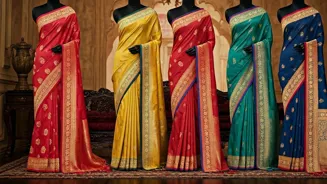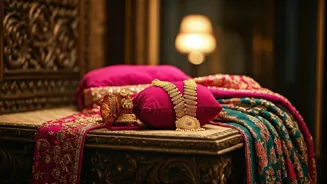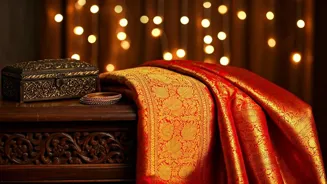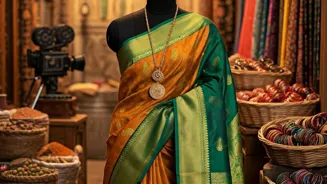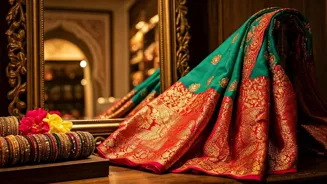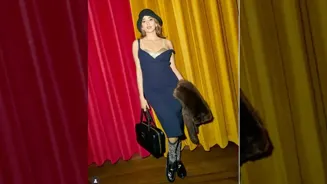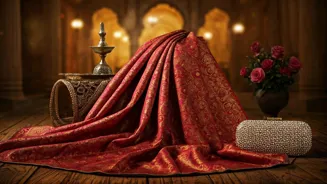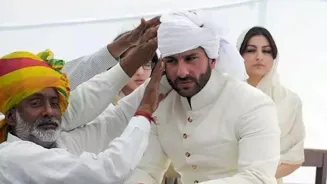In a world where trends often fade, Sharmila’s fashion remains timeless, defined by its elegance and ability to transcend generations.
Sharmila Tagore,
the iconic actress of Indian cinema, has long been celebrated not only for her acting prowess but also for her impeccable sense of style. With a career spanning over five decades, Sharmila’s wardrobe choices were far ahead of her time, setting trends that continue to inspire today’s fashion world. Whether it was in her glamorous film appearances, casual street style, or appearances at prestigious events, Sharmila’s sartorial choices were characterized by an effortless blend of elegance, sophistication, and boldness. Her wardrobe transcended the constraints of her time, making her one of the most influential style icons in Indian fashion history.
Sharmila Tagore’s Early Years: Bold Choices in Traditional Attire
When Sharmila Tagore entered the film industry in the early 1960s, she was a breath of fresh air in an era dominated by more conservative and traditional notions of femininity. Known for her roles in films like Kashmir Ki Kali (1964) and An Evening in Paris (1967), Sharmila’s style broke away from the classic glamour of her contemporaries. She wasn’t afraid to experiment with bold fashion choices that seamlessly combined Indian and Western elements. This blending of cultural aesthetics was a hallmark of her wardrobe, which often included elegant sarees paired with modern, chic accessories.
One of Sharmila’s most striking contributions to fashion during the 1960s was her ability to make traditional Indian attire look both contemporary and global. Her sarees, often draped in the most minimalistic yet elegant styles, were sometimes paired with Western-style blouses or accessories like large, statement earrings or chunky bracelets. This ability to fuse Western influences with Indian heritage in her wardrobe set her apart from her peers, making her an early pioneer of cross-cultural fashion blending.

Her roles on screen further cemented her position as a style icon. As a leading lady in Kashmir Ki Kali, Sharmila effortlessly blended the traditional Kashmiri shawls and simple tunics with chic makeup and hairstyles, creating an ensemble that was both glamorous and grounded in the film’s cultural context. In An Evening in Paris, Sharmila sported some of the most stunning Western-inspired looks of the era, introducing Indian audiences to the concept of high-fashion glamour with a distinctive Indian twist.
The Royal Influence: Sharmila as the Princess of Fashion
Perhaps one of the most defining moments of Sharmila’s sartorial journey came when she married Mansoor Ali Khan Pataudi, the Nawab of Pataudi, in 1969. This marriage marked not only a new chapter in her personal life but also her transformation into a fashion icon of regal proportions. As a member of the royal Pataudi family, Sharmila embraced her new status with grace and poise, often incorporating elements of royal elegance into her wardrobe choices. Her style reflected an intrinsic understanding of luxury and heritage, merging her Indian roots with international high fashion.
One of Sharmila’s most significant style choices was her affinity for Indian designers. In an era when Western designers were more commonly associated with luxury and glamour, Sharmila opted to wear traditional Indian craftsmanship, often showcasing the works of renowned designers like Sabyasachi, Abu Jani Sandeep Khosla, and Manish Malhotra. Her deep connection to Indian textiles and embroidery made her a true ambassador of Indian fashion on the global stage, showing that luxury could be synonymous with culture.
Sharmila’s wardrobe became synonymous with regal elegance, whether she was donning an intricately embroidered saree, a bespoke lehenga, or a flowing gown with traditional Indian touches. Her personal style was always marked by its understated elegance—never overly loud or extravagant, but quietly powerful, echoing the royal lineage she was now part of. This ability to embody royalty in her fashion choices without appearing ostentatious was a skill she mastered, making her wardrobe as much about the subtlety of luxury as it was about bold statements.

The Evolution of Her Fashion: Timeless and Versatile
As the years passed, Sharmila Tagore’s wardrobe continued to evolve, but her innate sense of style remained consistent. Whether at public events, film premieres, or casual outings, her ability to adapt her fashion choices to the times while staying true to her regal sensibilities ensured that she remained relevant in the ever-changing world of fashion. Her sophisticated saree drapes, paired with elegant jewellery and often accompanied by sleek hairdos, became her signature look in the 70s and 80s.
In the 1990s and early 2000s, Sharmila’s wardrobe took on a more refined, minimalist direction, reflecting the global shift towards understated luxury. While she remained a devoted wearer of traditional Indian attire, she also embraced modern designs and Western influences. Her wardrobe choices during this period included impeccably tailored suits, contemporary dresses, and more casual, yet equally elegant, separates. In this way, she demonstrated the versatility of timeless fashion pieces—pieces that could evolve with time but still retain their fundamental elegance and style.

Even in her later years, Sharmila remained a muse for both designers and fashion enthusiasts, embodying a quiet yet compelling grace. Her appearances at family events, public gatherings, or weddings continued to reflect her signature approach to fashion—sophisticated, understated, and regal. Sharmila’s fashion was never about excess or trying to be noticed; it was always about wearing clothes with grace and confidence, ensuring that each piece felt like an extension of her personality.
Why Sharmila Tagore’s Style Is Still Ahead of Its Time
Sharmila Tagore’s wardrobe was ahead of its time because it wasn’t just about following trends; it was about creating an identity through fashion. Her ability to merge Western and Eastern aesthetics seamlessly, while incorporating Indian heritage into high fashion, was groundbreaking at a time when this was a rarity. In today’s fashion world, where cultural fusion, sustainability, and understated luxury are more relevant than ever, Sharmila’s style feels incredibly fresh and inspiring.
Her wardrobe wasn’t just about showcasing the latest styles; it was about building a personal brand that reflected grace, poise, and an understanding of both traditional and modern aesthetics. As we continue to look for fashion icons who are not just about being trendy but about representing something deeper and more enduring, Sharmila Tagore’s fashion legacy remains an essential reference.


